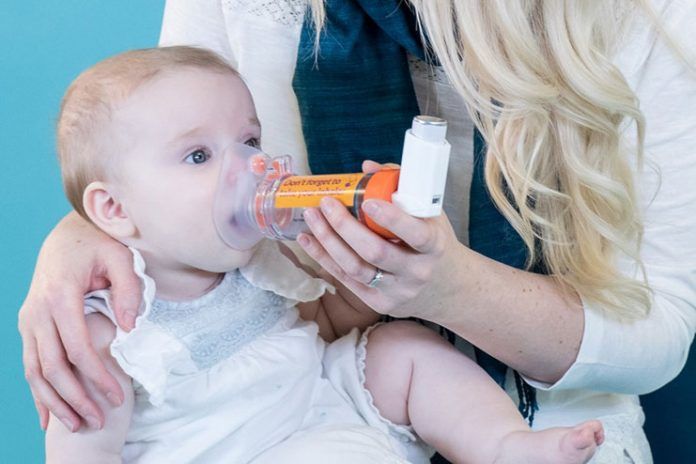Affiliate Disclaimer
Some links in this article are affiliate links. We may earn a small commission if you make a purchase through these links, at no extra cost to you. We only recommend products we find useful to our readersAsthma is a very common disease in children. According to the statistics from 2017, it was suggested that 1 in every 12 kid had asthma. This itself is an alarming number and needs immediate attention. But, have you ever thought of the factors that could further aggravate the situation?
A new study (R) conducted by the researchers from the Simon Fraser University found that the frequent and prolonged exposure to home cleaning products enhances the risks of asthma in newborns. The same was assessed in accordance to the first three months of the child’s life.
According to the study published on Canadian Medical Association Journal, it was suggested that young infants (till the age of three months), who are exposed to home cleaning products frequently are more likely to develop the conditions of wheezing and asthma by the time they are three years old.
Dr. Tim Takaro, a professor and clinician- scientist in the Faculty of Health Sciences at Simon Fraser University (SFU), who is also the lead author of the study suggested saying that majority of the findings linking asthma triggered by home cleaning products are based off of the adults.
This is the reason why the researchers chose a different approach and wanted to see the kind of impacts the same has on the infants. The infants are the ones spending 80-90% of their time inside the house. This was the reason why the exposure to cleaning products is more for the kids than adults, hence the approach.
While looking through the results and observations, the researchers found that the children who were exposed to the home cleaning products excessively were more likely to experience the symptoms of recurrent wheezing, recurrent wheezing with atopy and asthma by the time they were 3 years old.
One of the other common causes behind the asthma that individuals point out is the exposure to second hand smoke in the house. This doesn’t have a very conclusive result, which is why the researchers are further looking into this. Hereditary factors also do play a role in the same.
Dr Takaro further emphasised on the findings saying that the chemicals that are found in the cleaning products cause direct damage to the cells through the lining of the respiratory tract. The mechanism was also believed to be via the innate inflammatory pathway rather than the acquired allergic pathways.
They also found that the impacts of the same were higher in girls than in boys. This is something that the researchers are further pondering on to find differences among the male and the female biological responses to inflammation.
For the study, the researchers analysed the data from 2022 children in the CHILD cohort study. The children were examined daily, weekly and monthly for their exposure to 26 different types of home cleaning products.
Jaclyn Parks, a graduate student in the Faculty of Health Sciences at SFU, who is part of the study found that the risks associated with the recurrent wheezing and asthma were higher in some households. Some of these cleaning products included deodorants, dusting sprays, hand sanitizers, floor cleaners etc.
Additionally, the products that come with added scent to them are considered even more harmful for the individuals.
Concluding the study, the researchers clarified stating that the first few months are crucial for the development of a newborn. This especially extends to the immune system and the respiratory responses. Taking into account the hazardous results can effectively help eradicate the risks of asthma in the kids.


















